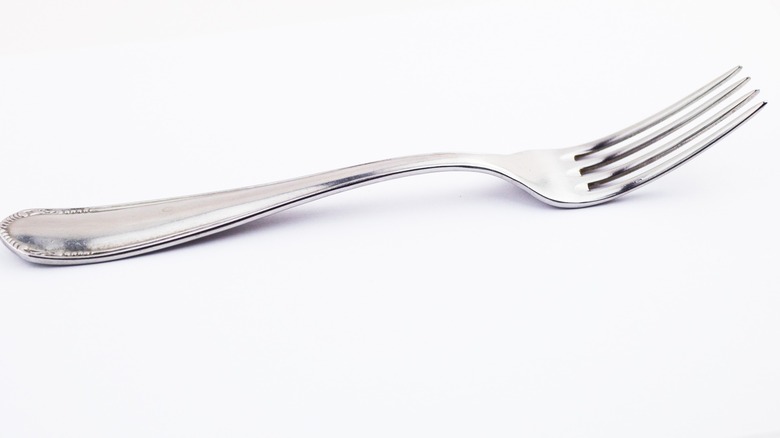All You Need Is A Fork To Remove Chicken Tendons Without A Fuss
From the succulent thighs to the crispy wings, each part of the chicken has its unique charm. However, there's a common component present in some chicken parts that may not be everyone's favorite — the tendon. Particularly found in chicken tenders, this small white strand runs the length of the meat, presenting itself as a noticeable, chewy obstacle in an otherwise tender bite. While it's entirely edible and harmless, many prefer to remove it for a smoother culinary experience. And the simplest way to do so is using a fork.
The chicken tenders or tenderloins, are the little strips of meat tucked away between the chicken breast and the bone. Being a popular choice for dishes like stir-fries, salads, and the ever-loved chicken tenders, it's essential to address the tendon issue for that perfect texture. While various methods and tools promise an easy removal of this tendon, the fork method guarantees a no-fuss process without damaging your delicate tenders or wasting the meat.
How to do the fork method for tendon removal
To begin, lay the chicken tender flat on a cutting board. You will easily spot the tendon running through the length of the tender. At one end, usually the thicker one, you'll see a bit of the tendon peeking out. That's your starting point. Place the prongs of your fork firmly over the tendon, close to where it starts. You're essentially pinning it down. With your other hand, grip the end of the tendon between your thumb and forefinger. This might feel a little slippery, so to ensure a firm grip, hold it using a paper towel.
Now, with a steady hand, pull the tendon out and away from the chicken while simultaneously pushing the fork forward, sliding it along the length of the tendon. The fork's prongs keep the tendon in place, providing a sort of track for it to slide out smoothly. With a bit of practice, you'll find that the tendon comes out in one clean, swift motion, leaving you with a perfectly tender, ready-to-cook piece of chicken.
The beauty of this method is its efficiency and precision. Unlike cutting the tendon, which may lead to meat wastage, the fork method isolates the tendon and removes it while keeping the good parts untouched. It's simple, quick, and ensures you have the best possible chicken texture for your culinary masterpiece.

